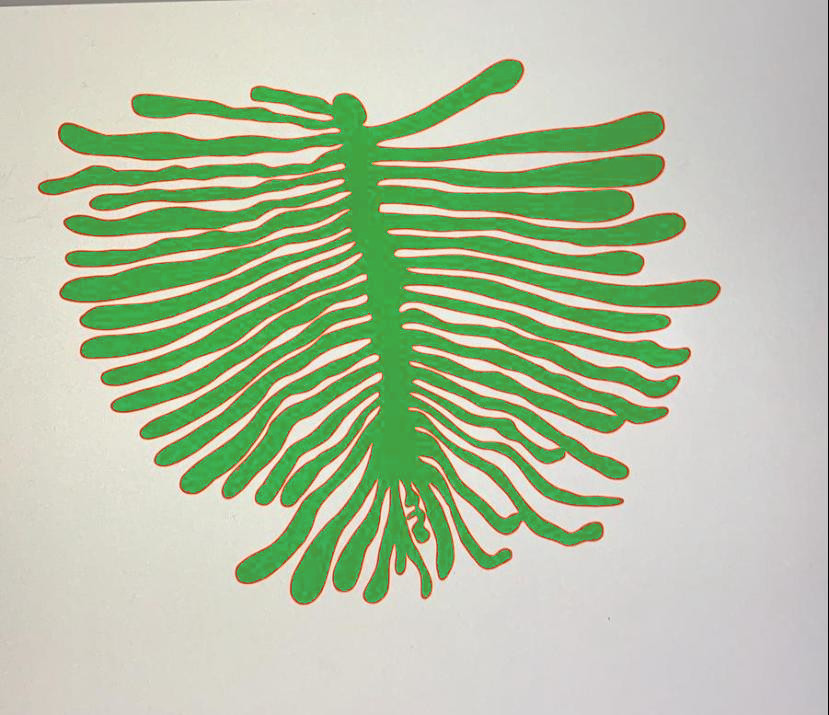Wann?
Donnerstag, 01. Oktober bis Samstag, 03. Oktober
Wo?
objekt klein a (Meschwitzstr. 9, 01099 Dresden)
Wer?
Augusto Gerardi & Estefanía Montero
Was?
An installation that seeks to build new ways to understand the interspecies problems that we face in the present. In this edition we try to interrogate the relationships between an insect, the Barkbeetle, and government policies in different countries, and proposing a vision for the near future, where the traces of these insects will infect our day to day, in the form of art.
Dein Bezug zum Thema „Wald“?
Arthropocene/Coleoptera/Ips typographus
The Antropocene is happening, all the predictions became true, all the futures are open. The colonization of Mars1 is a close future, with agendas, and agreements, China is growing plants in the Moon2, and for 2050 the farms in the bottom of the sea will be a fact3. In all this possible futures, what other species could change the geological time like the humans? Which one will survive to all the new ecological changes? What kind of indicator have we in the present that allows to have a clue about the future?
In the close future of the planet Earth, global warming will open a new kind of relation between species, a close relation with creatures that live in the peripheral of the anthropocentric realm, or that will find the perfect enviroement for a massive grow. This event will change landscape, ecology, and human behaviour, proposing new ways of living and new ways of understanding life.
Saint Augustine in his confesions said that maybe the future is allways hidden in the present, hidden in the invisible dimension of the present, and scripted between lines in the past. Following the ideas of Saint Augustine, to understand this idea of Antropocene, we need to understand the changes that made posible this geological time. One of the theories supports it began in the neolitic period around 12.000-15.000 years ago, when the agricultural revolution started, were one of the key features was to understand the relevance of the pollinisation process. The main responsible for the execution of pollinisation are the Arthropodes, one the oldest life forms on Earth, that have survived for at least 280 million years and distributed all over the planet surface, even in very extreme ambiental conditions like deserts and the poles, being the most evolutive successfull animals.
Arthropocene is a main project that aims to understand the future relation between the Transhuman and Posthuman life forms with the arthropods life forms. The arthropods share a history of encounters, a history of missunderstandings with the human life, for example in several countrys like Mexico, China and Cambodia, eating different arthroopd species is a common practice. In our daily life eating shrimp, claws, crabs and lobsters is usual too, but for example with the lobster, the missunderstanding appeared, according to David Foster Wallace in his essay „lets talk about lobster“, where he explains that eating lobsters was a punishment, he found that in the English Court in the middle of XVI century it was forbiden to give lobsters to the prisioners more than one time per month, considering this practice antihuman and against life, period where torture, inquisition, and execution was part of the daily life of a prision. This relations still shaping our future, for example in the latest research of Curtis A. Deutsh, he found a relation between global warming and the growing insect population, and how could this afect the food producction in the future: “Insects already consume 5 to 20% of major grain crops. The authors‘ models show that for the three most important grain crops—wheat, rice, and maize—yield lost to insects will increase by 10 to 25% per degree Celsius of warming…“4
Facing the future relation with arthropodes, we find specific situations for specific geographies. The one we chose for this edition is the Bark Beetle (Ips typographus)5 boom in Germany, that started in 2018 according to Peter Biderman in his article Bark beetle population dynamics in the Anthropocene: challenges and solutions6. The Ips typographus is already changing the ecosystem as we know it. Ambiental conditions have favored them and increased their population. The last two winters were warmer and dryer, making the trees vulnerable and the beetles are finishing with huge amounts of the forests. This repercutes in the landscape, the ecosystem and the economy: the wood industry is being strongly affected, among others.
This changed landscapes are something already existent.
The beetle continues growing and devastating the forests, silently but steady it spreads exponentially. Their size helps them not to be easily detected and they just let inside the surface of the tree trunks their trail, their print, as they are called in german „Book Printer Beetle“ and it’s genre typographus that describes its characteristic behaviour of “printing” the trees. This is also a situation that many are still not aware of.
Even the army7 in germany was involved in the procedures trying to defeat this invisible infestation, the woodworkers needed to cut hectareas of wood, to prevent the total destruction of the forest. In this two years the human-beetles relation is changing, in this case with lots of effort, money, energy and ideas involved, to deal the present moment.
For us this BOOM of the Bark Beetle will happen more often in other geography and with other species. Today this is happening in the forest, tomorrow could reach the citys. This boom in germany, will change how the forest looks like, and all the ecosystem. We attempt to explore this possibilities creating an installation that allows us to dream about this relation, what kind of images will appear, what kind of devices will we make, what kind of histories will we tell, how will it sounds like, how will it feels like.
1https://www.spacex.com/mars
2https://www.wired.co.uk/article/china-grows-first-plants-on-the-moon
3http://www.nemosgarden.com/
4https://science.sciencemag.org/content/361/6405/916
5https://www.myscience.de/en/news/2019/scientists_alarmed_by_bark_beetle_boom-2019-uni-wuerzburg
6https://repository.up.ac.za/bitstream/handle/2263/70713/Biedermann_Bark_2019.pdf?sequence=1&isAllowed=y
7https://www.reuters.com/video/watch/german-army-wages-war-on-bark-beetle-pla-id593474838
Hier gibts alle weiteren Infos zu den Political Art Days 2020 – Fokus: Wald.

